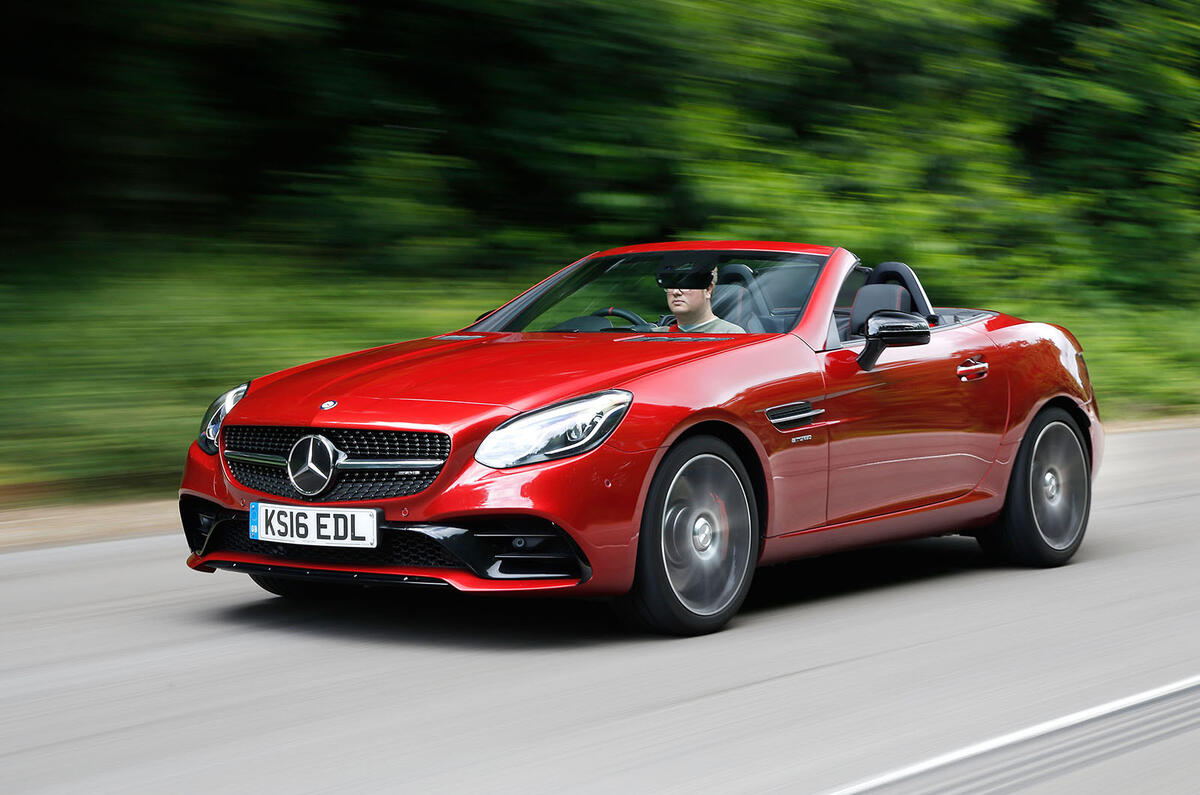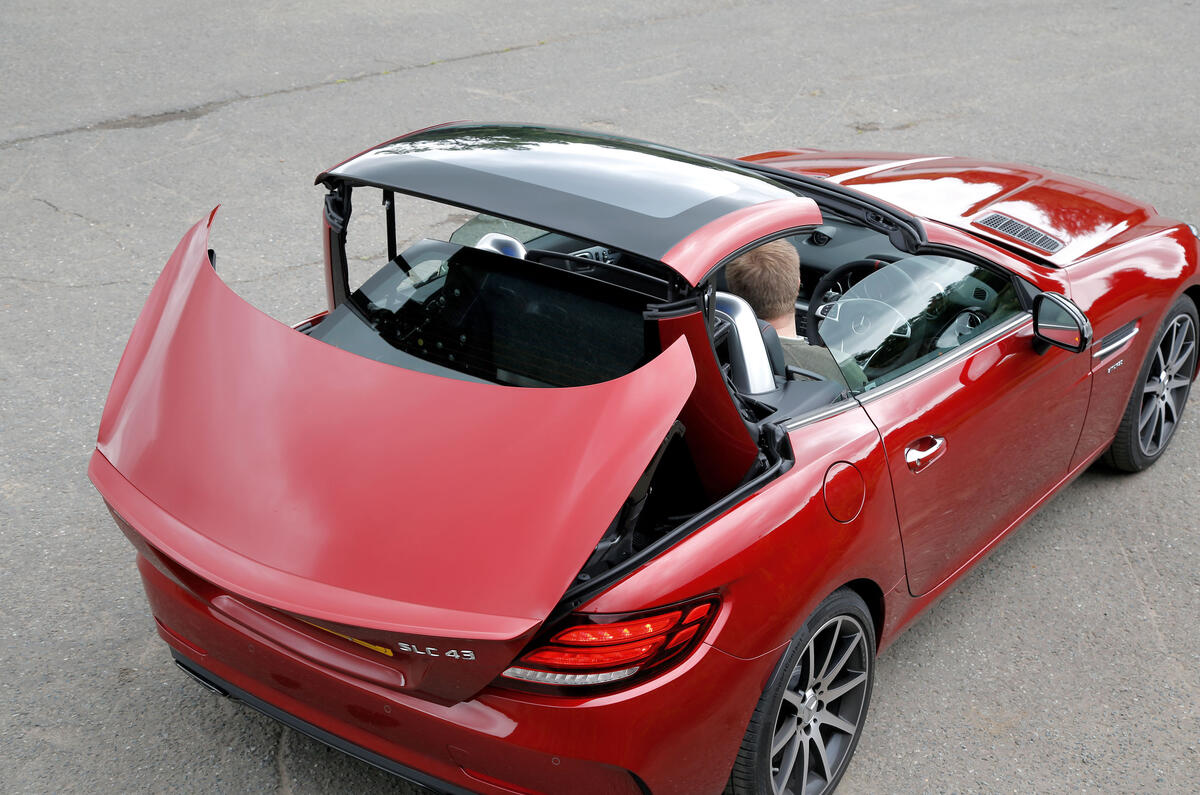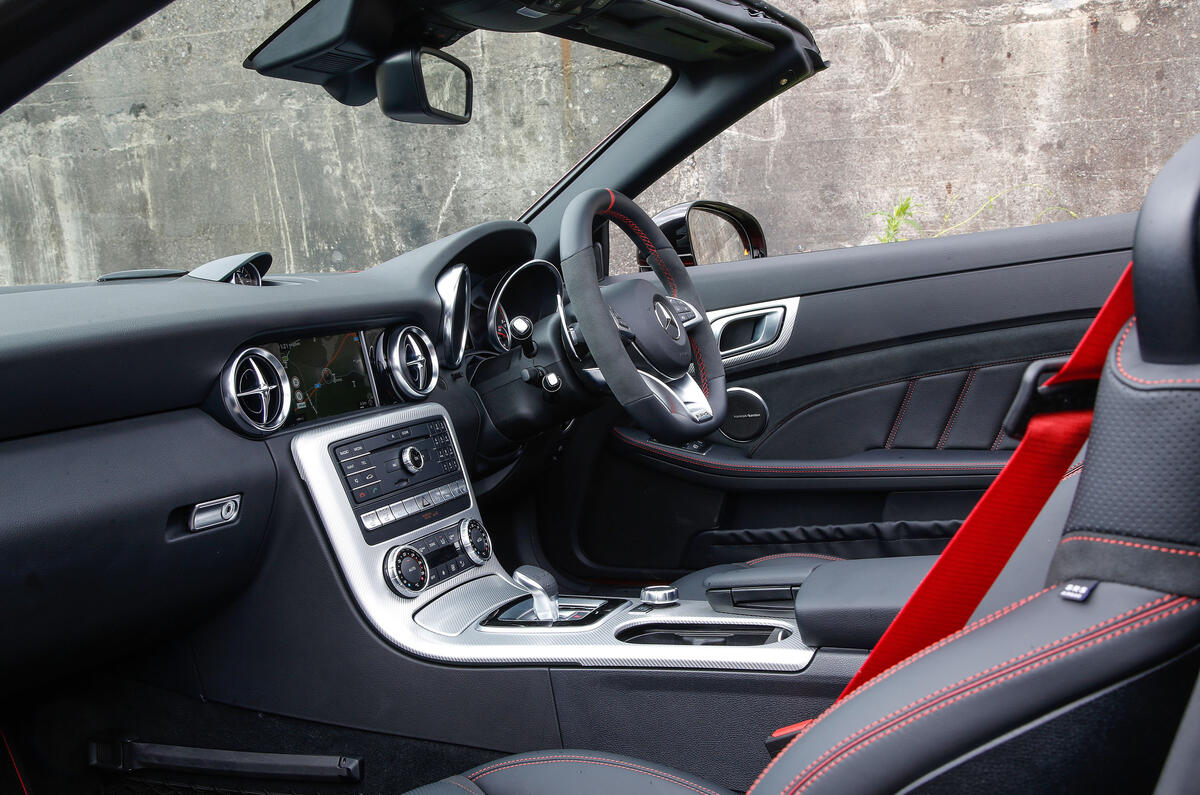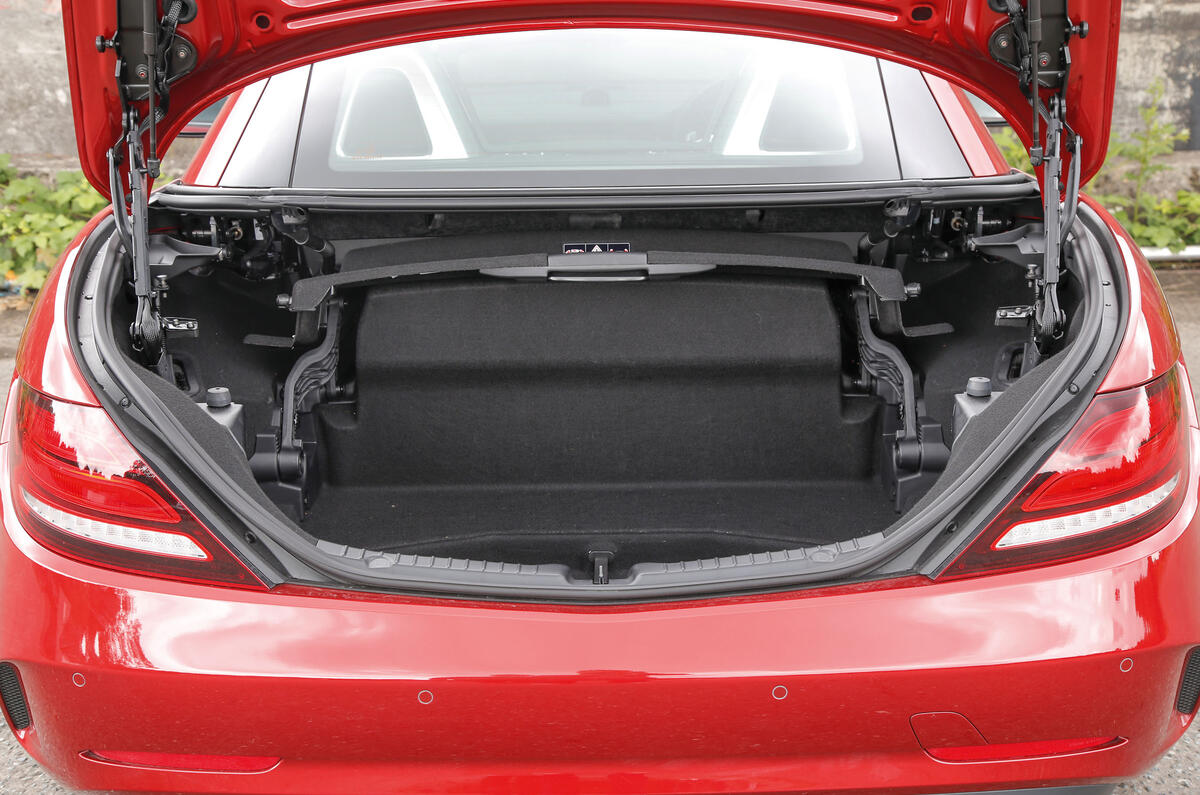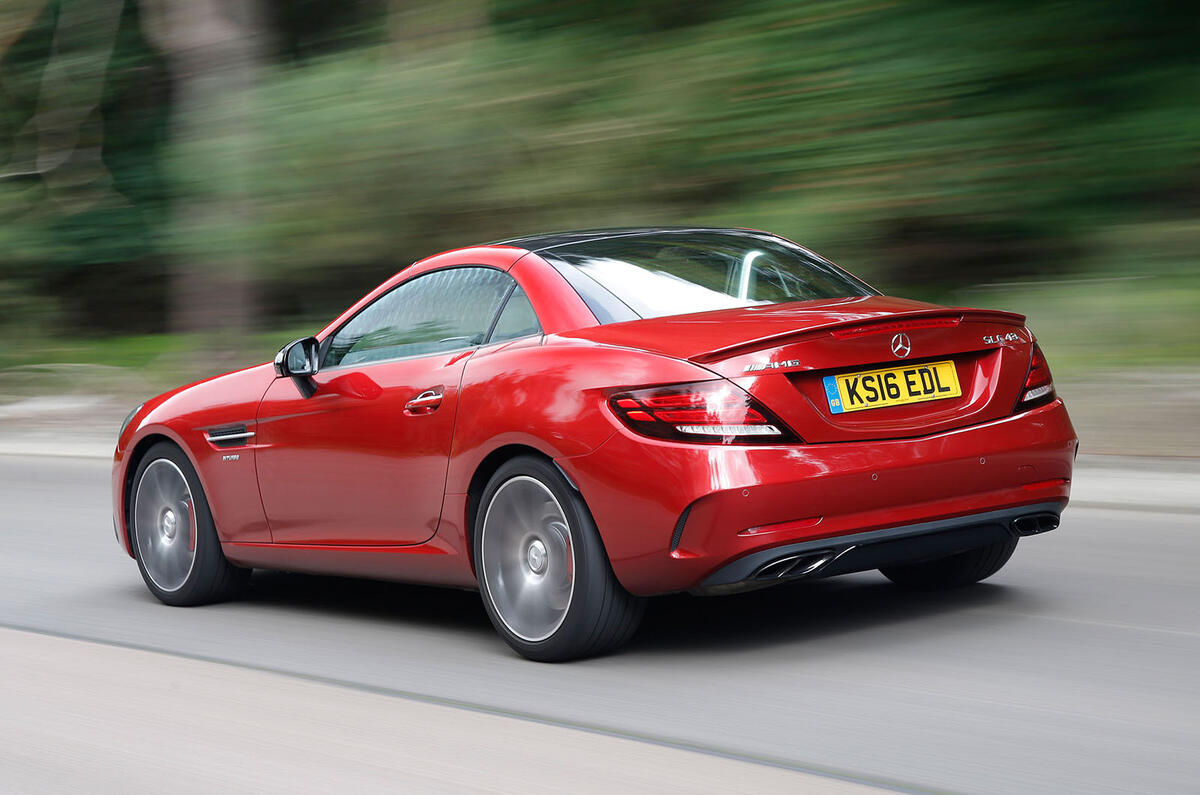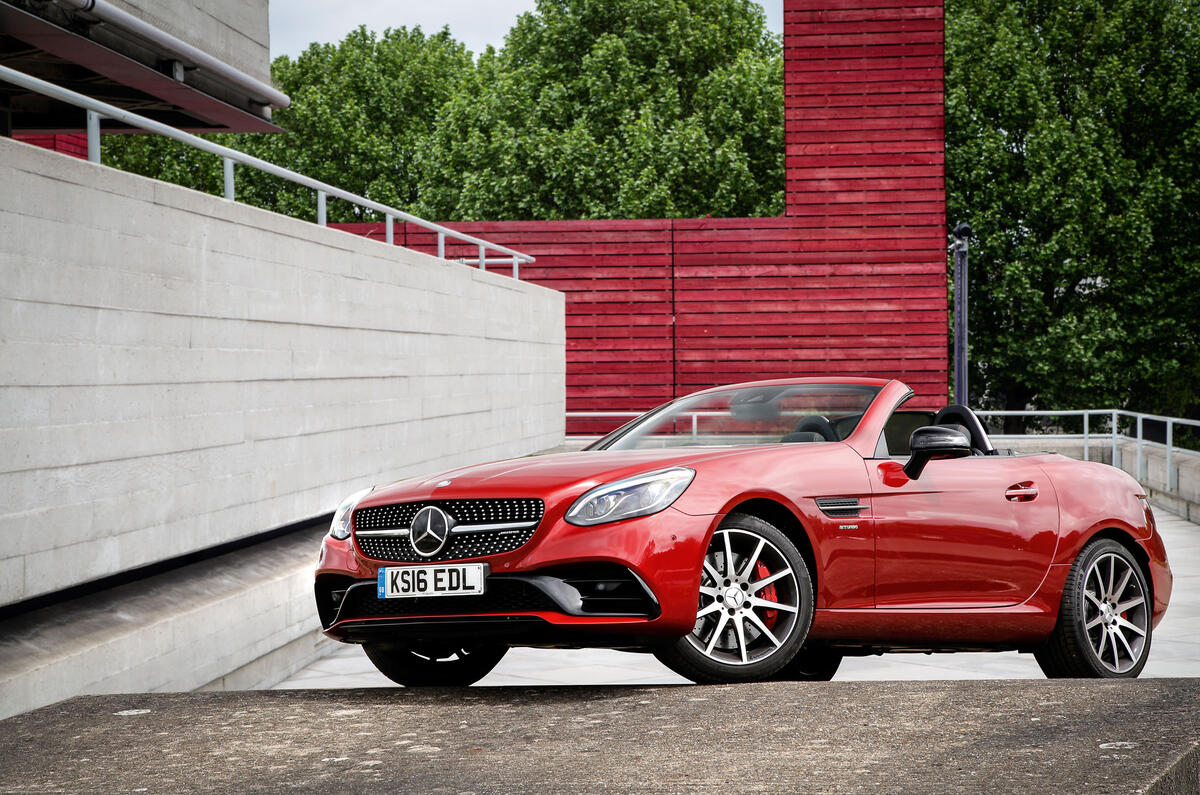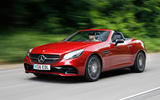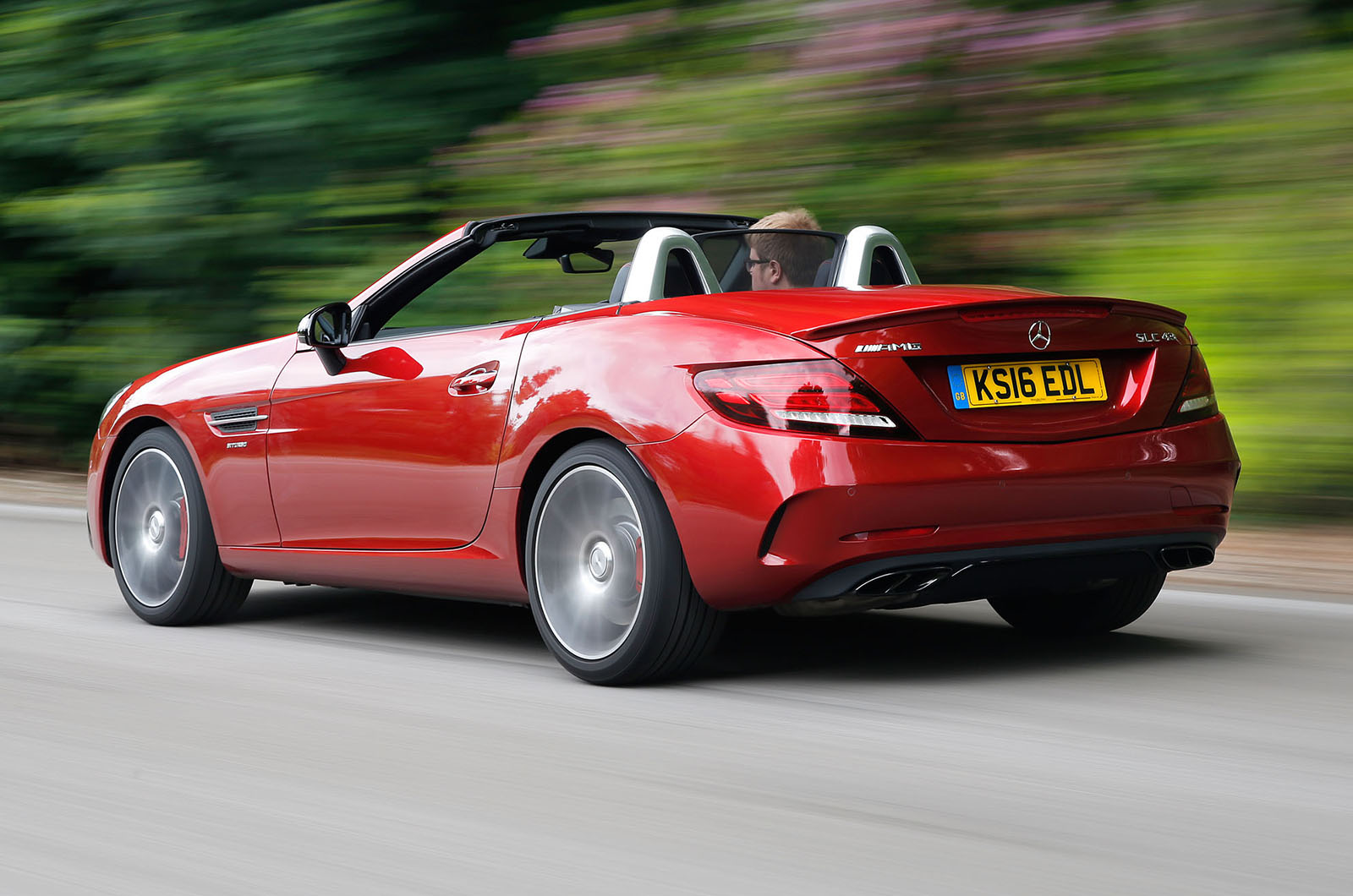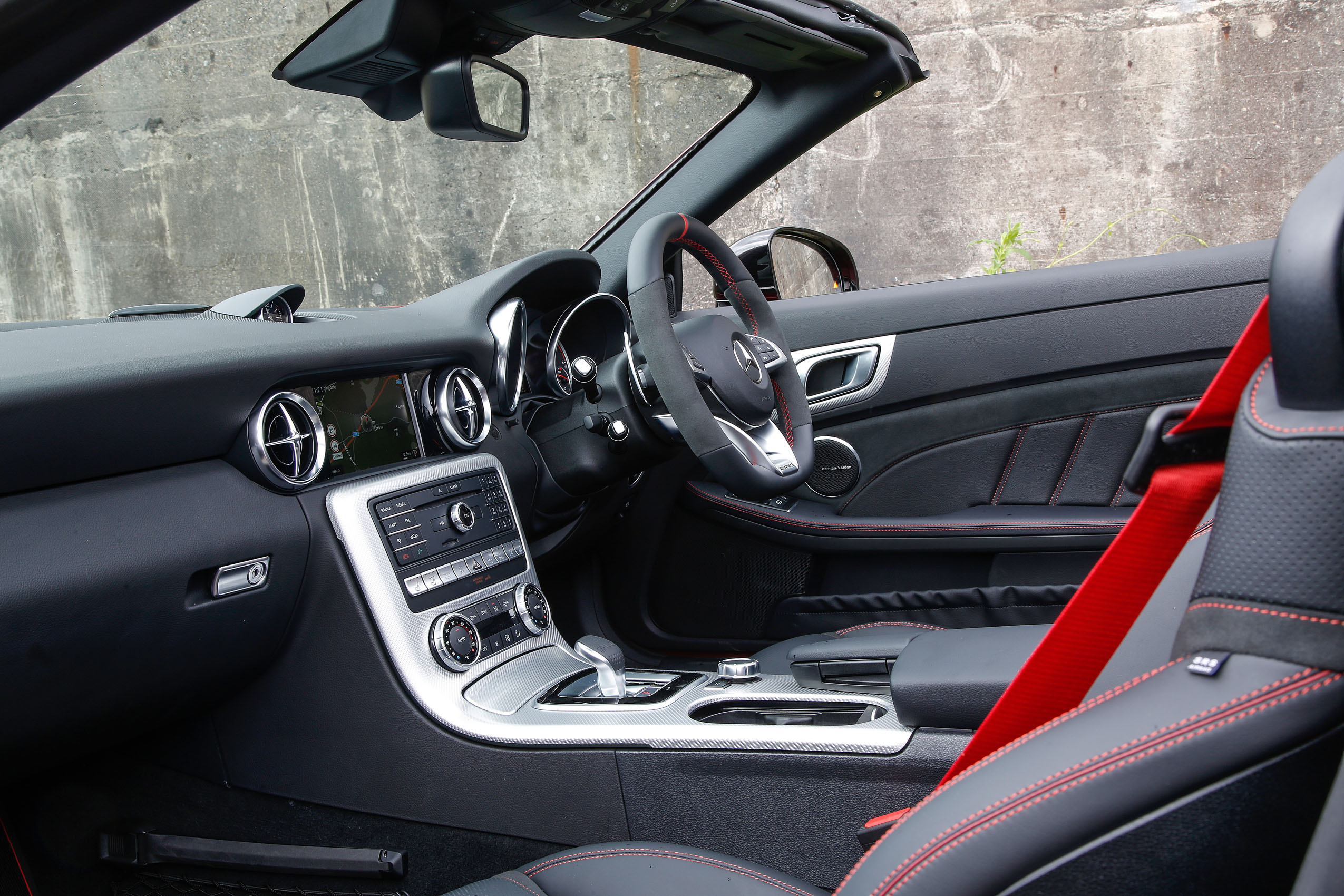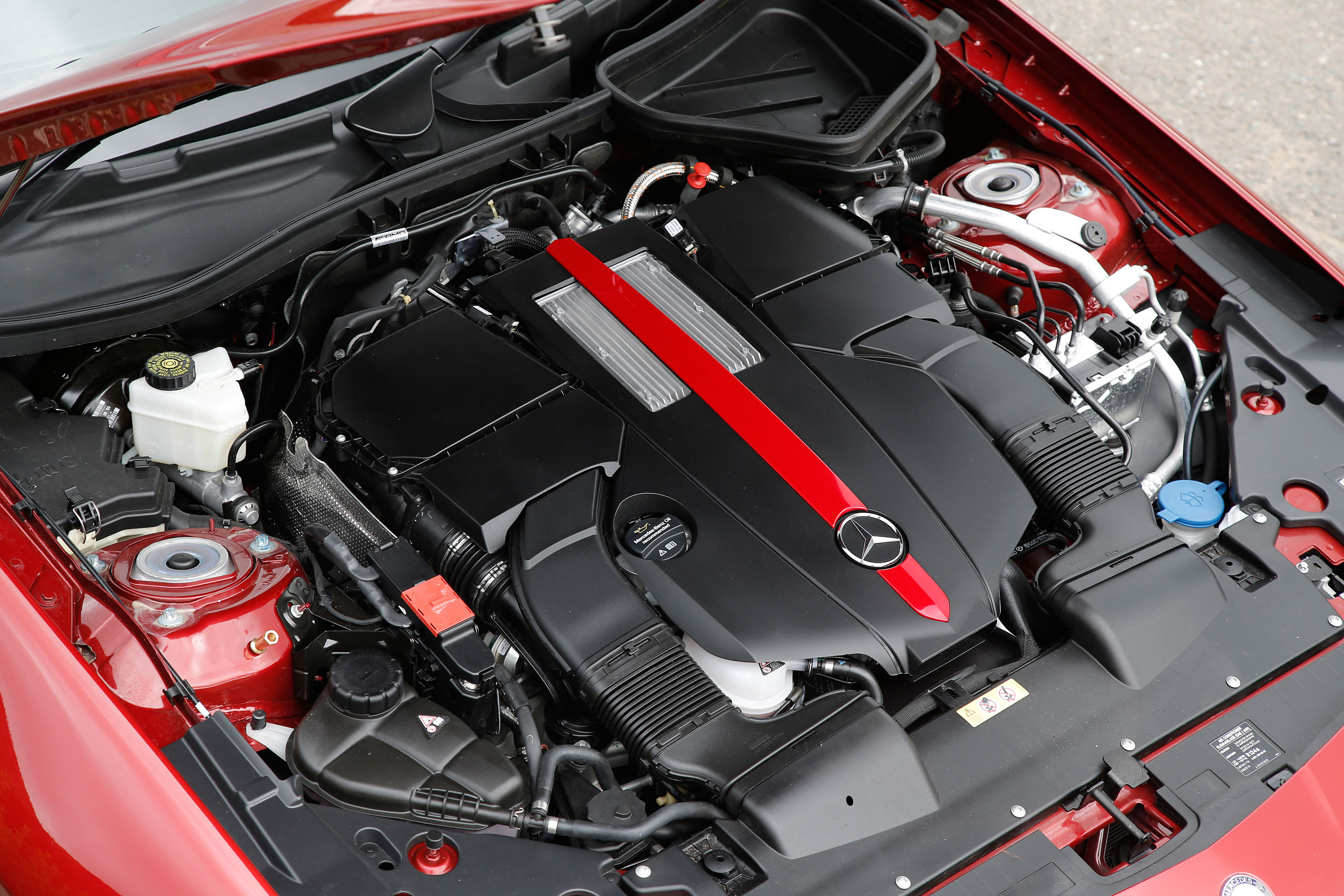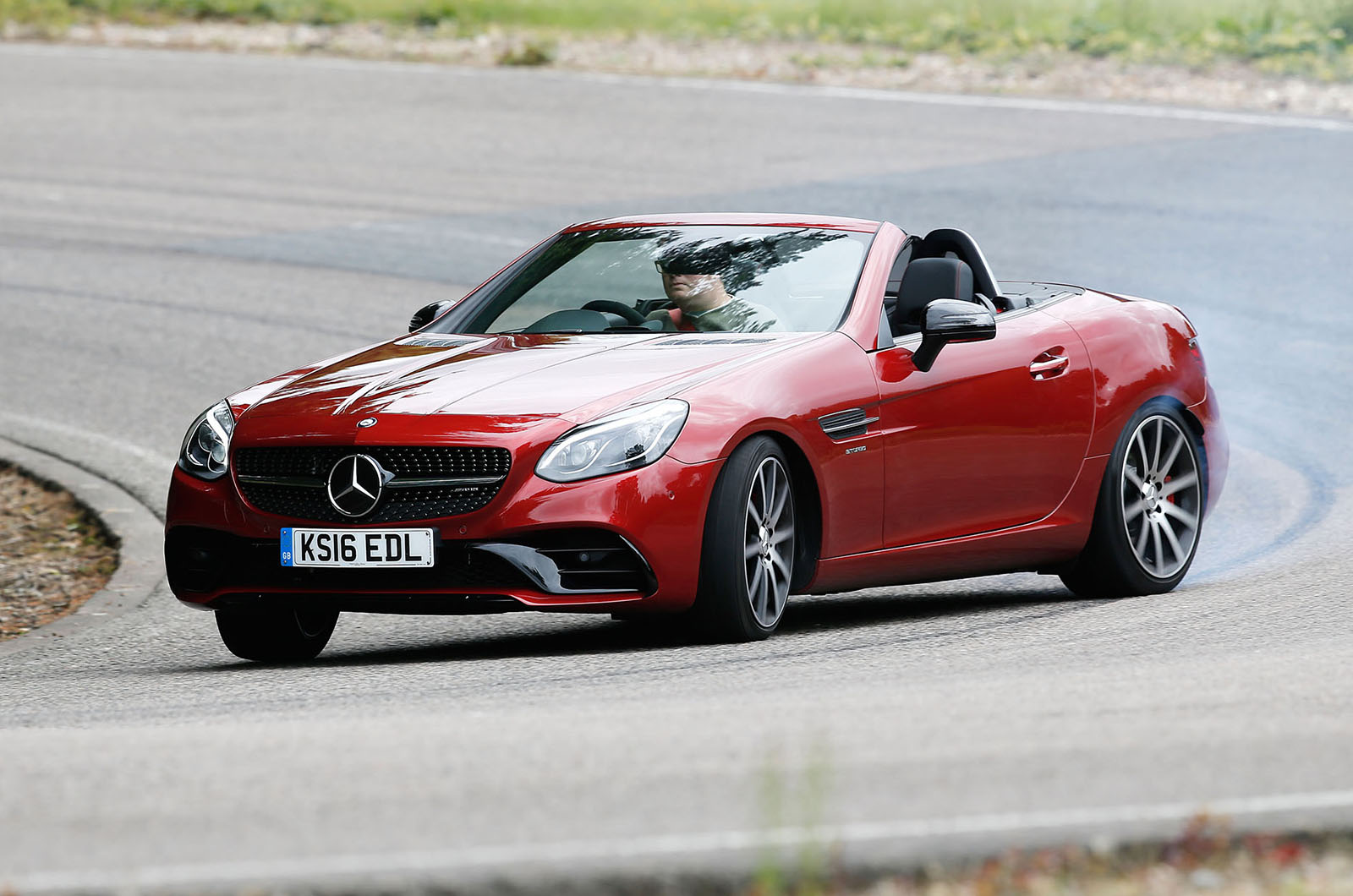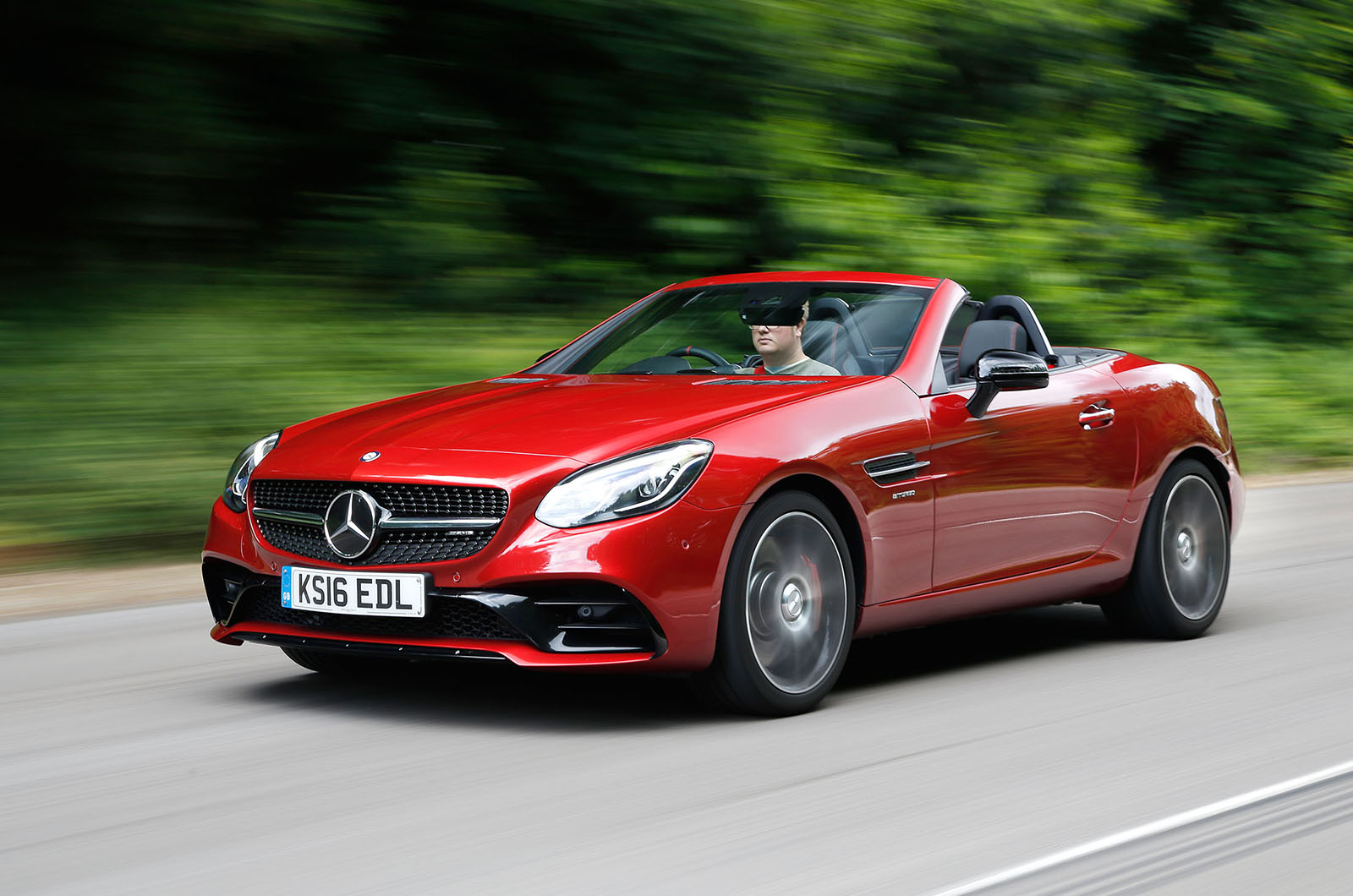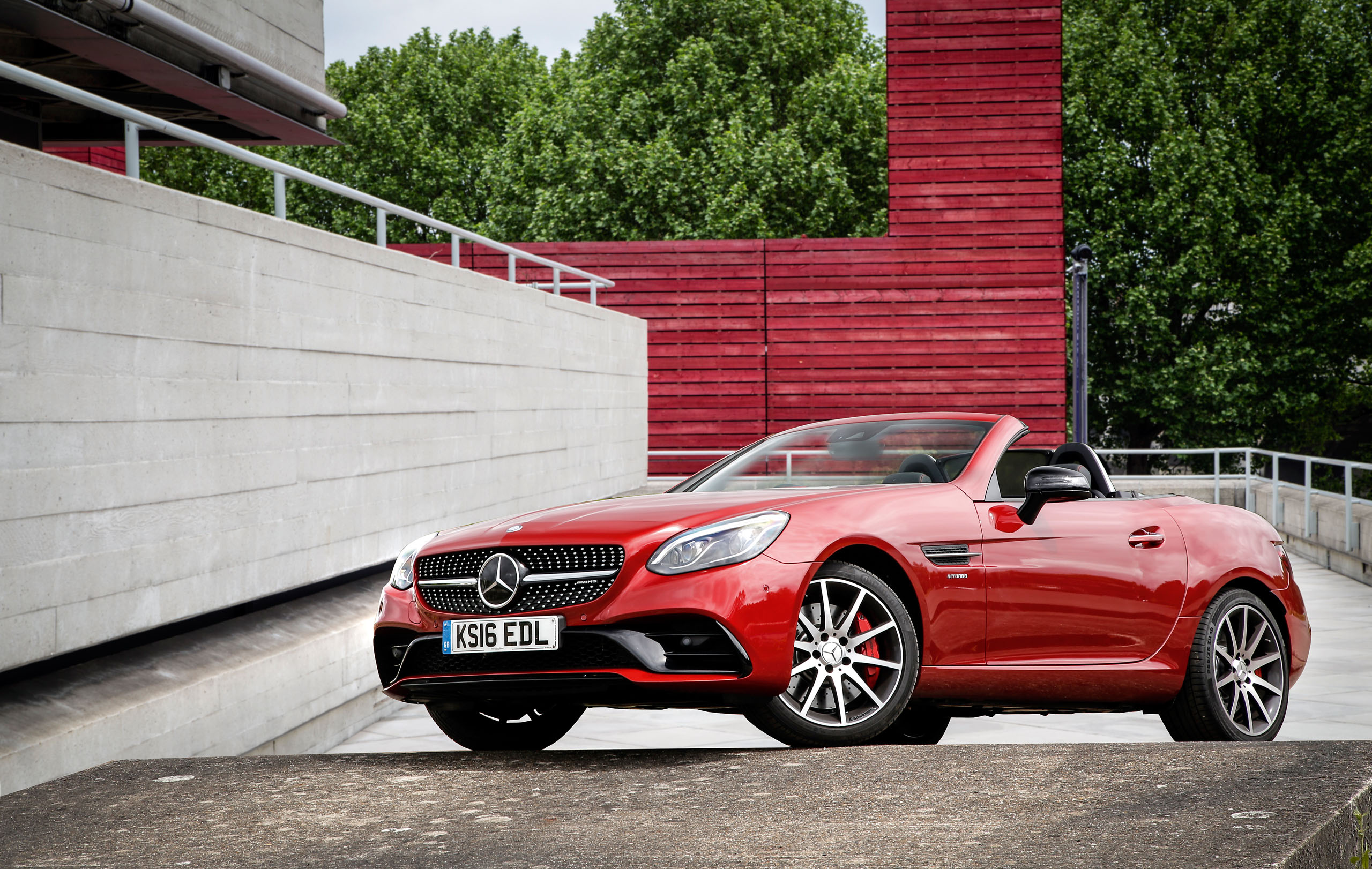Mercedes says the rationale behind the renaming of the SLC (née SLK) was to draw a clearer parallel with the sister model with which the car shares most: the Mercedes-Benz C-Class saloon.
However, it’s the previous C-Class to which the SLC bears a particular resemblance – and it’s something you don’t need any help to conclude after a moment at the wheel.
It’s immediately obvious that Mercedes cabin design has progressed a very long way in the five years since the launch of this R172-generation car – and the SLC hasn’t benefited from that progress as it should have.
The driving position is a little too highly set to feel truly sporting, the centre console a little too low. The seats are comfortable enough and the material quality on show in all directions is very good.
But although Mercedes has done what it can to bring the car’s switchgear, instruments and infotainment system up to date, it still hasn’t quite done enough.
From the button-stacked centre console and the odd-looking, ashtray-sized storage cubby underneath it to the 7.0in multimedia display screen that is bigger than before but still not quite big enough, so many of the SLC’s interior fittings conjure a small but unmistakable sense of antiquation that it could do without.
Although Mercedes has expanded the SLC’s infotainment display screen from 5.8in to 7.0in in diagonal diameter, it still looks small compared with the screens currently being fitted by the competition.
As standard, you get the firm’s Audio 20 sound system with CD player, six speakers, Bluetooth audio streaming, DAB tuner and two USB ports. You get Garmin Map Pilot navigation as well.
As a multimedia offering, it’s just about generous enough in a £46,000 car not to look mean. However, for any proper smartphone integration, voice control, live traffic information or internet connectivity, you need to upgrade to Comand Online.
The Comand system gives you Mercedes’ own internet apps and in-car internet access for Facebook, internet radio, news and weather reports, as well as Apple CarPlay connectivity.
It’s not quite as sophisticated a system as it really ought to be, or as Mercedes offers in other models, but the navigation works well enough and mapping is displayed clearly and crisply. The optional Harman/Kardon stereo sounds good rather than brilliant.
Occupant space is good, even for larger people. You won’t find a great many places to stow smartphones, wallets and drinks, the door pockets being small and difficult to access, the glovebox shallow and the armrest cubby likewise.
But in a broader sense, there’s plenty of carrying space in the car and the boot is large enough with the roof up to rival that of a small hatchback.
The folding roof is simple to operate and completely automated. Lift and hold the covered switch next to the cupholders and the metal top detaches from the header rail, doubles over on itself and disappears neatly under the cantilevered bootlid.
Moreover, Mercedes has addressed two of the frustrations of the pre-facelift car by, firstly, allowing the mechanism to work while you’re travelling at low speeds and, secondly, by allowing the boot divider to close automatically before the roof slides back (assuming there’s nothing in the boot to prevent it from doing so).



